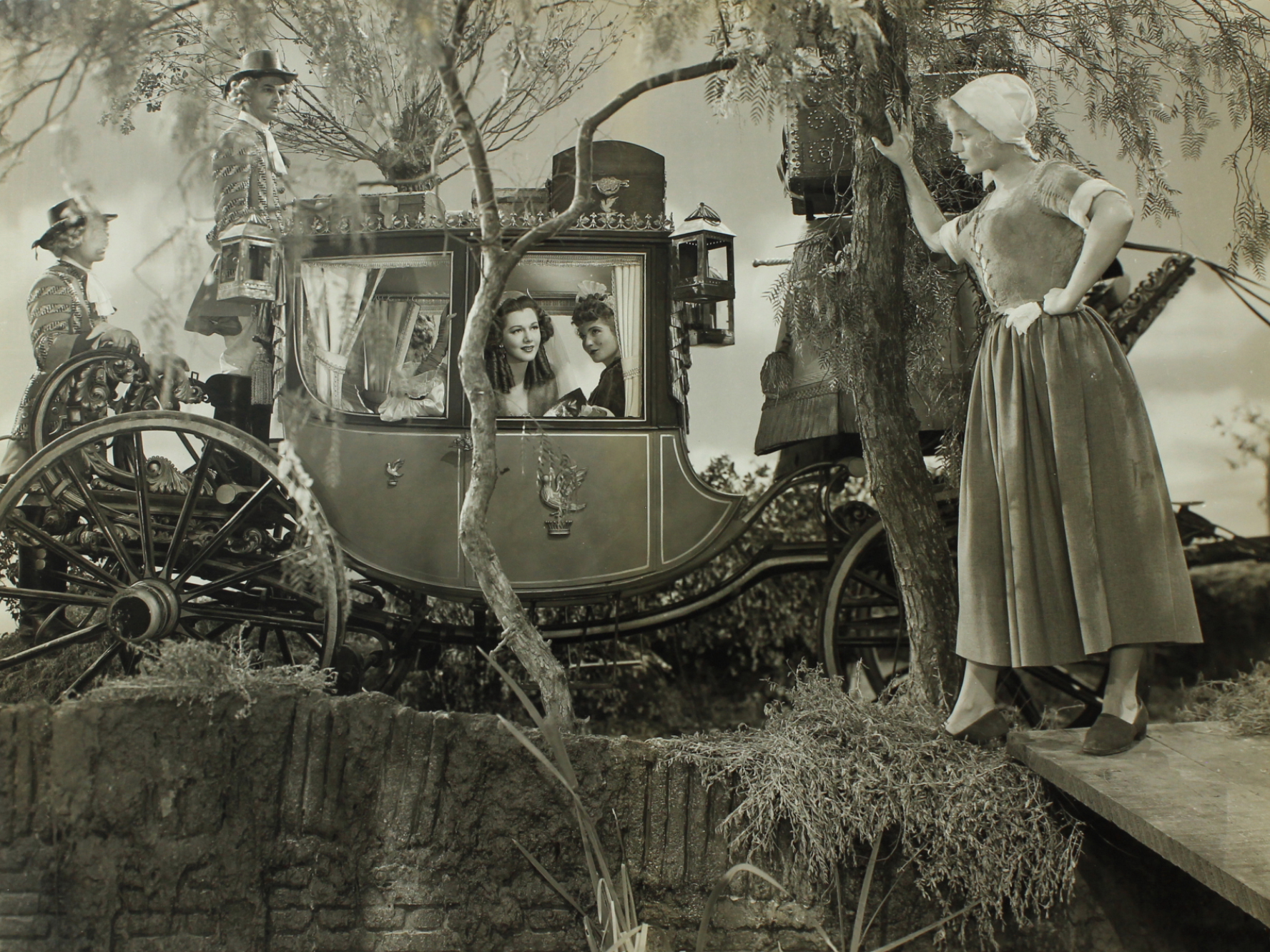
- Industry
Restored by HFPA – “The Exile” (1947)
Aiming to follow in his father’s swashbuckling footsteps, Douglas Fairbanks, Jr. bought the rights to the 1926 book “His Majesty, the King: A Romantic Love Chase of the Seventeenth Century” by Cosmo Hamilton in 1941.
Plans to make a film based on the material had to be put on hold as he joined the US Navy for active duty in WWII. On his return as a decorated veteran with many military honors, he formed The Fairbanks Company, and in association with Universal, announced The Exile as the first production of a three-picture deal. Fairbanks, Jr. produced the film and received his first screen credit as a screenwriter.
German exile Max Ophuls was hired on as director; this would be the first Hollywood movie he directed in the five years he had already spent in Los Angeles despite a distinguished European career. Though the going rate for directors was $75,000 at the time, he was paid $22,500. He would go on to make three more films in Hollywood (Letter from an Unknown Woman (1948), Caught (1949), and The Reckless Moment (1949)) because of this break given to him by Fairbanks, Jr., but this film remains his least seen. “He needed the money desperately to get back to Europe and was a most interesting director,” Fairbanks told the Los Angeles Times.
Ophuls is quoted as saying about the shoot that he “had very little faith in that film … [Fairbanks and I] had great fun making [it] – perhaps a little too much, because frequently I found myself shooting a scene without knowing who was drawing a sword against whom, why they were fighting, why killing… In short, I found it hard to follow. I think that shows in the film, but I greatly enjoyed working with Fairbanks.”
The story is set in the Netherlands where Charles Stuart (Fairbanks, Jr.), deposed King of England, is in hiding, along with a few loyal supporters, from Oliver Cromwell’s Protectorate, waiting for an uprising from his subjects to restore him to the throne. The year is 1660. He refuses a plea from some followers to return to England and revolt against Cromwell, waiting for a unanimous appeal for his return. In the meantime, he falls in love with Katie (Rita Corday, using the name Paule Croset), a tulip farmer, and hides out as a laborer on her farm when Cromwell’s Roundheads, led by Colonel Ingram (Henry Daniell), come to Holland to assassinate him in advance of the revolution brewing in England.
Comic relief is supplied by an impoverished actor (Robert Coote) who arrives at the farm claiming to be the king. Glamor is supplied by Countess Anbella (Maria Montez), an ex-lover of the king’s. And the swashbuckle is supplied when Ingram arrives in pursuit of Charles. The resulting chase involves a mad horseback ride to a windmill where all of Fairbanks, Jr.’s athletic skills are employed as he leaps over fences, rides the windmill’s blades, jumps through windows, climbs on roofs, and gives the audience their money’s worth as he defeats Ingram in a thrilling sword fight (using the sword his dad used in The Iron Mask of 1929). Alas, duty calls when he is summoned back by the British parliament, and Katie gives him up because of “all the things you’ll be able to do for so many people, all the wounds you can heal.” He sadly answers, “I’ll come to you in dreams.”
The film has two endings, one for U.S. audiences and one for the European territories. The storyline is unchanged, there are a few extra shots in the European version. The TCM version on YouTube shows both endings.
Cinematographer Franz Planer’s camera swoops and swirls in long, complicated takes and tracking shots (sepia-toned black and white photography was used as the production couldn’t afford Technicolor). The theatrical sets were designed by Broadway production designer Howard Bay and all built on Universal soundstages, including the tulip field, the inn, the windmill and the village. When the film was released at the same time as the hit Forever Amber, some wags labeled it “Forever Dark Brown.”
Montez, lent by Universal to the production, had a contract that guaranteed her top billing in every film she performed in. So did Fairbanks, Jr. A legal fight ensued in the federal courts, and an out-of-court settlement allowed her to retain top billing in the film (with second billing in the press books) when she dropped her restraining order, despite only appearing for about 20 minutes in the film. After this film, Universal did not renew her contract and it was the last film she made for the studio.
Other interesting billing side notes: ‘Paule Croset’ is introduced in the film, but the Tahitian-born Corday had already made several films before this one and used the device presumably to reinvent herself. She also used the names Rita Croset and Paula Corday later, but her career remained undistinguished though she received good notices for this one. And Ophuls, born Max Oppenheimer, used the spelling ‘Opuls’ for his American films, including this one.
The charismatic Fairbanks, Jr. is every bit as good in the film as the father he tried to please his whole life. “There was a time when, as a boy, I would have preferred to change my name,” he told the Christian Science Monitor in 1993. But “when you have a father as famous as I had, one of the most powerful men in Hollywood and one of the most popular movie stars in the world, it was inevitable… What else could I do but keep the name, insist on using the `Jr.’ to differentiate me from `Sr.,’ and do the best I could?”
The Exile lost money and Fairbanks, Jr. never made the two other films he had announced.
The film was restored with funding by the Hollywood Foreign Press Association in association with The Film Foundation.

